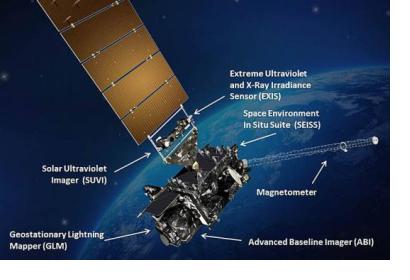United
Nations
Office for Outer Space Affairs
UN-SPIDER Knowledge Portal
The Geostationary Operational Environmental Satellite-R (GOES-R), recently launched by NASA, is the first in a sequence of highly advanced geostationary weather satellite to serve the National Oceanic and Atmospheric Administration (NOAA). The main goal of this satellite is to generate precise data to be used to create and isue opportune and precise watches, forecasts, and warnings.
After the checkout and validation of its six new instruments, the new satellite will be operational in approximately a year. Among the instruments there is the first operational lightning mapper in geostationary orbit, which forecasters will use to hone in on the greatest threats: storms.
The main instrument, the advanced Baseline Imager, will provide images of Earth’s weather, oceans and environment and climate sensors on board will monitor the sun and provide vital information so forecasters will be able to provide space weather alerts and warnings. The 34 weather products provided by GOES-R will be innovative meteorological solar and space weather ones. To know more about this satellite network please click here.
